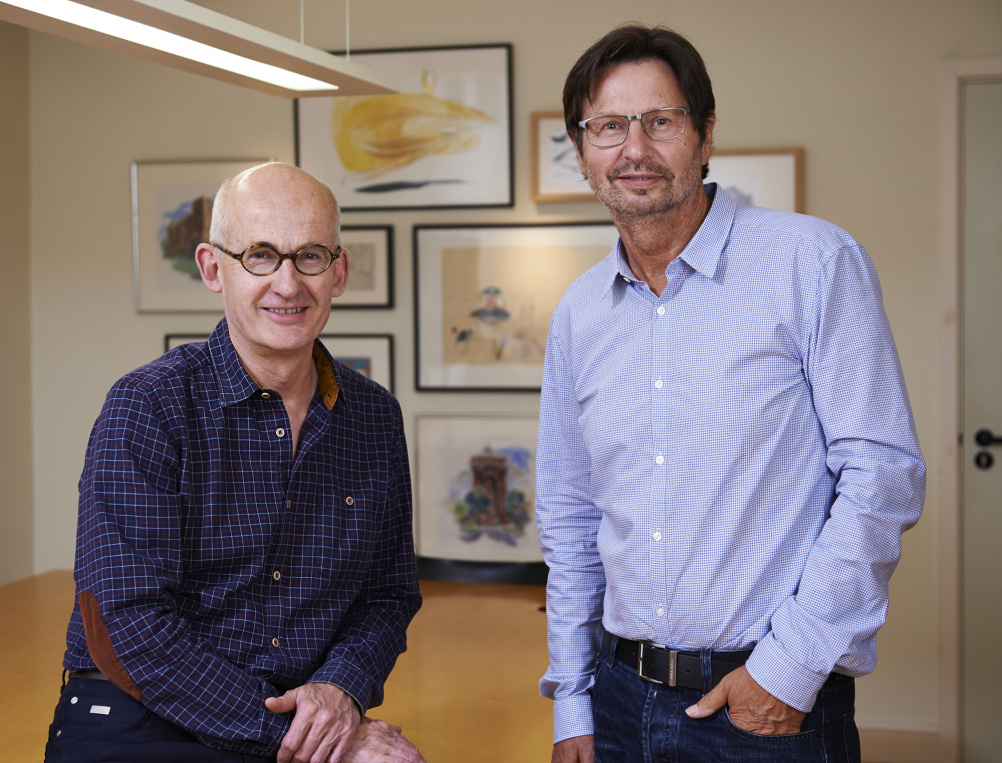Ten Questions for: Silk Pearce
Peter Silk and Jack Pearce of Silk Pearce answer our Ten Questions. Having worked together as Silk Pearce for 30 years (this year) they found that their individual responses often complemented each other’s – and in the end they were coming from the same place.

When did you realise you wanted to be a designer?
Peter Silk:I wanted to be a clown until I was eight and then settled for being an artist, which morphed into being a designer. Sometimes I feel as if I’ve accidentally achieved my original ambition.
Jack Pearce: I realised that I wanted to be a designer when my art teacher told me that’s what I wanted to be.
How would you describe what you currently do?
PS: I tend to do a bit of everything – designing, writing, illustrating and shooting pictures, while persuading clients to like what I like!
JP: I try to design things that people like and that companies feel excited about using.
(Both: Plus: managing the company; directing our team; new business; reports and strategies; costing; invoicing; recruitment; etc; etc)
What has been the biggest change in design since you started?
PS:The physical way we work has changed almost completely. Fortunately a good idea is still a good idea.
JP: The year we started phones were made of Bakelite and mobiles were to help babies sleep, so we have seen huge changes to almost every aspect of the tools of the trade, and the design deliverables. On top of this the democratisation of design is changing the way we work with clients.
What is your favourite project, that you’ve worked on?
PS: I love working for arts and heritage organisations. I always relish starting a new project for Royal Mail – from stamps to collectors’ items – not just for the design challenge but also for the opportunity to explore new subject matter. We have worked with Aldeburgh Music for 15 years through a period of fantastic development for the organisation. It’s been great to not just be part of that journey but also to contribute to what they have achieved.
JP: The work that we’ve done for paper companies has provided the freedom to work in a conceptual way without showing a photograph of a product. High spots include the “Pot Job” (for Wiggins Teape) that won two D&AD pencils in 1989, and current work for Favini – who we have helped launch to the high-end speciality papers and surfaces sector.
What is your favourite project, that you haven’t worked on?
PS: Although I’ve designed quite a few books it would be great to work on one with great subject matter, brilliant writing and fantastic imagery – and have time to do them justice.
JP:Anything where we are working directly with decision makers, with the freedom to be creative and the budget to match.
What was your biggest mistake?
PS: Managing to lose good employees.
JP: To work for someone I didn’t like.
What is your greatest ambition?
PS:To play guitar like Richard Thompson.
JP: Hard to believe, but I’m living the dream!
Who is the most inspirational person you have worked with?
PS: My art teacher at school who (surely by more than a quirk of fate) was named Joseph Turner. Jonathan Reekie, who until this year was chief executive at Aldeburgh Music, combined a clarity of vision with a willingness to take risks and had an annoying habit of suggesting ideas that improved our designs!
JP: David Pocknell – who was the first complete designer I encountered – and Peter, of course! We take inspiration from many sources, I remember us jointly interviewing a young graduate for a job as a junior designer. Her work was not the best, but the amount of it and the sheer love of what she was doing was inspirational. Peter and I looked at each other and we both had tears in our eyes. We took her on.
What piece of advice would you give to people starting out in design?
PS: Read Jack’s answer to the last question.
JP: Read my answer to the last question!
-
Post a comment




